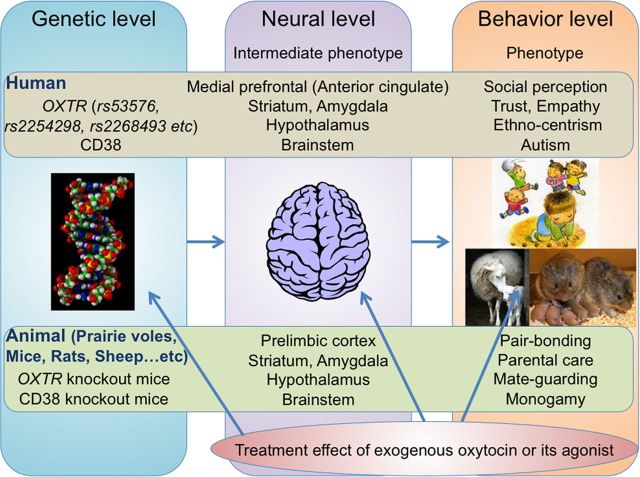Figure 1.
An integrative and translational model using oxytocin to enhance prosocial behavior: from animal and human social behavior to ASD's social dysfunction. Individual differences in genetically determined factors related to oxytocin such as SNPs in oxytocin receptor genes (OXTR) and CD38 in humans and OXTR/CD38 knock-out mice (Takayanagi et al., 2005; Jin et al., 2007) shape individual differences at the neural level such as function and structure in the limbic and paralimbic brain regions. Individual differences in these brain functions and structures should generate behavioral characteristics ranging from normal to extremes, including various social behaviors such as pair bonding, parental care, mate guarding, selective partner preference, monogamy, empathy, trust, ethnocentrism, social anxiety, social withdrawal, and ASD's social dysfunctions. Although human and animal studies are in different streams, genetic factors related to oxytocin and their neural and behavioral phenotypes are homologous at each level. It is expected that the therapeutic effects of exogenous oxytocin or its agonists can improve the behavioral and neural phenotypes associated with oxytocin-related genetic factors. Furthermore, early or long-term administration of oxytocin might even have an effect at the genetic (e.g., epigenetic, such as methylation of OXTR) level.

